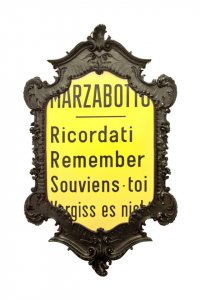L'autorappresentazione dell'artista tra immagini, parole e simboli: "Ebdòmero" di Giorgio de Chirico
Abstract
Giorgio de Chirico wrote the autobiography Memorie della mia vita (Memories of My Life), a book in which he retraces his life in great detail, paying attention to the numerous journeys that marked his youth (from Greece to France to Italy), to the war years and the years that followed, without failing to underline the inseparable link between these events and his work as an artist. But while in Memorie della mia vita the narration follows a linear course and the account of the artist's life is limpid and precise, the same cannot be said of de Chirico's other autobiographical book, Hebdomeros. Published for the first time in France in 1929 with an emblematic subtitle: Le peintre et son génie chez l'écrivain. In Hebdomeros, the narrative diverts all rules: the book is not simply an autobiographical account, but also a literary transposition of the painting, which thus acquires an additional degree of legibility. Despite the polemical break with André Breton, in Hebdomeros it is possible to discern a closeness to Surrealist techniques. Above all, it is a book with autobiographical overtones unfolding in an exceptional way. The narrator moves through an uncontrolled labyrinth of perception in which reality and fiction, rationality and madness, oneiric imagery and verbal intertexts overlap to the point of becoming indistinguishable. In Hebdomeros, the dream world becomes the device through which De Chirico narrates his own life and art, putting into practice a theoretical procedure that is reflected in poems and proses of his Parisian period (above all Rêve, which appeared in the first issue of the magazine La Révolution Surréaliste in 1924). Hebdomeros is an autobiography that lies in the most original semantic field of metaphysics, since the writer gives the story a form that goes beyond life and belongs to the realm of the Dream. My essay will compare the image of the artist who lived through the years of Surrealism with that of Memorie della mia vita, where the artist is widely recognised, and the writing is aimed at historicizing his own work as well as clarifying the ties with Breton and Surrealism. The aim of this article will be to investigate how de Chirico represented his life as an artist in his literary works, and to analyse the relationship between writing and painting, paying particular attention to the autobiographical form of Hebdomeros, a crucial novel to study how de Chirico positioned himself within the artistic environment of the 20th century.
Downloads
Pubblicato
Come citare
Fascicolo
Sezione
Licenza
Copyright (c) 2023 Elephant & Castle

TQuesto lavoro è fornito con la licenza Creative Commons Attribuzione 4.0 Internazionale.






